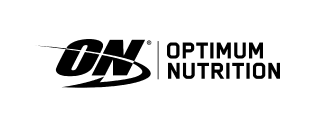
- Health advice
- Nov 03, 2014
Recent Articles
Liquid error (sections/article__main line 117): wrong number of arguments (given 3, expected 1..2)
Liquid error (sections/article__main line 140): wrong number of arguments (given 3, expected 1..2)
When it comes to nutrition, supplements are just that and although they are a great adjunct to your health they can only do so much.
Instead, your body’s nutritional needs are fulfilled most effectively by the food you eat—especially fruits and vegetables.
With that in mind, scientists discovered some time ago that fruits and vegetables can be divided into groups, not only by their colours, but also by the nutrients and health benefits they provide.
Therefore, nutritionists and other medical professionals recommend that you eat from each of those groups for a total of at least seven servings per day. Now, that may sound difficult to accomplish, but once you get the hang of things, it can really become quite fun. Just remember the colours of the rainbow!
Red
Fruits and vegetables in the red family contain nutrients such as ellagic acid, hesperidin, lycopene, and quercetin. Thus, red fruits and vegetables offer the ability to:- Lower blood pressure
- Reduce tumour growth
- Lower your risk of prostate cancer
- Reduce cholesterol
- Remove free radicals
- Provide support to arthritic joints
Orange
The orange family is known for nutrients such as beta-carotene, potassium, vitamin C, flavonoids, lycopene, and zeaxanthin. Consequently, this group:- Lowers blood pressure
- Lowers your risk of prostate cancer
- Lowers cholesterol
- Removes free radicals
- Reduces your risk of macular degeneration
- Promotes collagen formation
- Boosts joint health
- Encourages alkaline balance
- Repairs damaged DNA
- Supports the functions of magnesium and calcium
Yellow
Yellow fruits and vegetables are great sources of lutein, beta-cryptothanxin, carotenoids, and zeaxanthin. These nutrients provide:- Reduced risk of macular degeneration
- Lowered risk of cataracts
- Support for cell communication
- Protection from heart disease
Green
The green group is easily recognisable with the powerful, detoxifying nutrient it contains known as chlorophyll. Nevertheless, this group also contains fibre, lutein, magnesium, calcium, folate, vitamin C, beta-carotene, and zeaxanthin. This line up of nutrients therefore helps you:- Lower blood pressure
- Manage stress
- Support brain health
- Boost digestive function
- Maximise muscle function
- Inhibit the action of carcinogens
Purple and Blue
All the phytochemicals found in this group not only make its members real eye-catchers, but also powerful antioxidants. As a result, this group:- Protects you from heart disease
- Reduces your risk of Alzheimer Disease
- Improves memory
- Supports cell communication
- Slows aging
- Fights cancer
White
Last, but not least, the white group is not to be ignored with its flavonoids, lignans, beta-glucans, EGCG, and SDG. These nutrients may sound unfamiliar, yet they are necessary for:- Strengthened immunity
- White blood cell activation
- Balanced hormone levels
A rainbow of health
Again, consuming the nutrients you need for overall health can be as simple as eating from each of the groups above. And for more advice or ideas, you can always ‘Ask a Naturopath’.Recent Articles
Liquid error (sections/article__main line 218): wrong number of arguments (given 3, expected 1..2)
Liquid error (sections/article__main line 242): wrong number of arguments (given 3, expected 1..2)
Related Articles
Recently Viewed
- ${ variant.price | currencyFromCents } | ${ variant.title } ${ variant.price | currency } | ${ variant.title }
Sale















